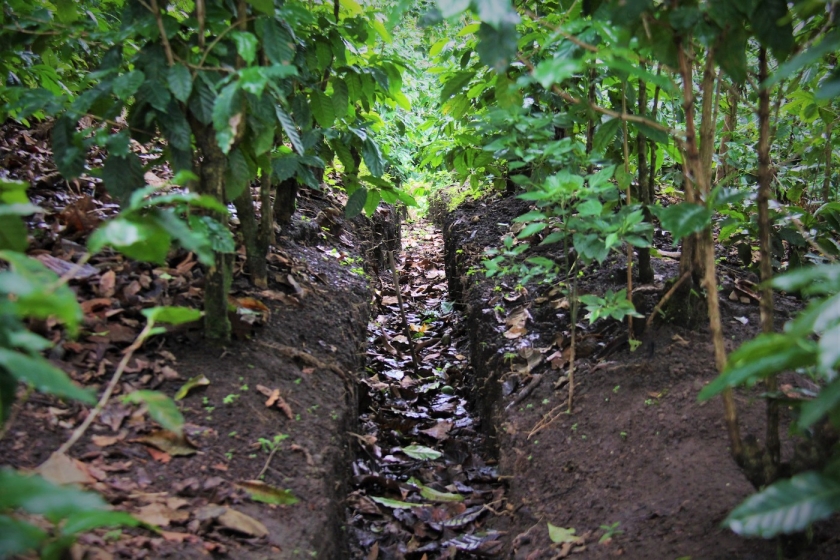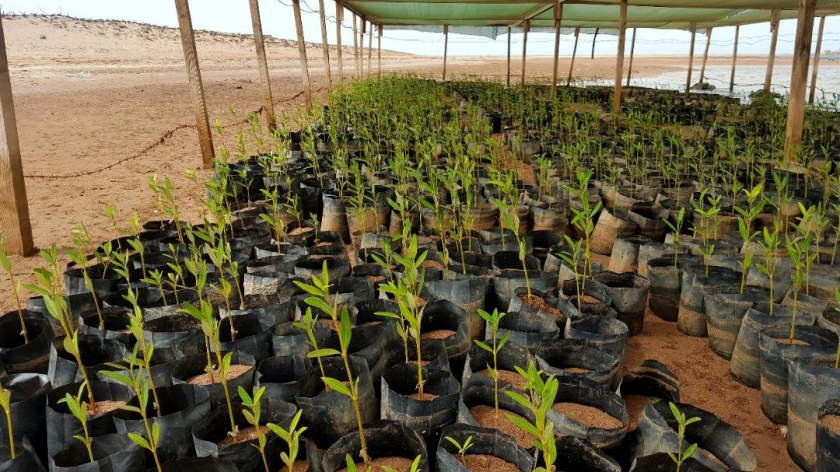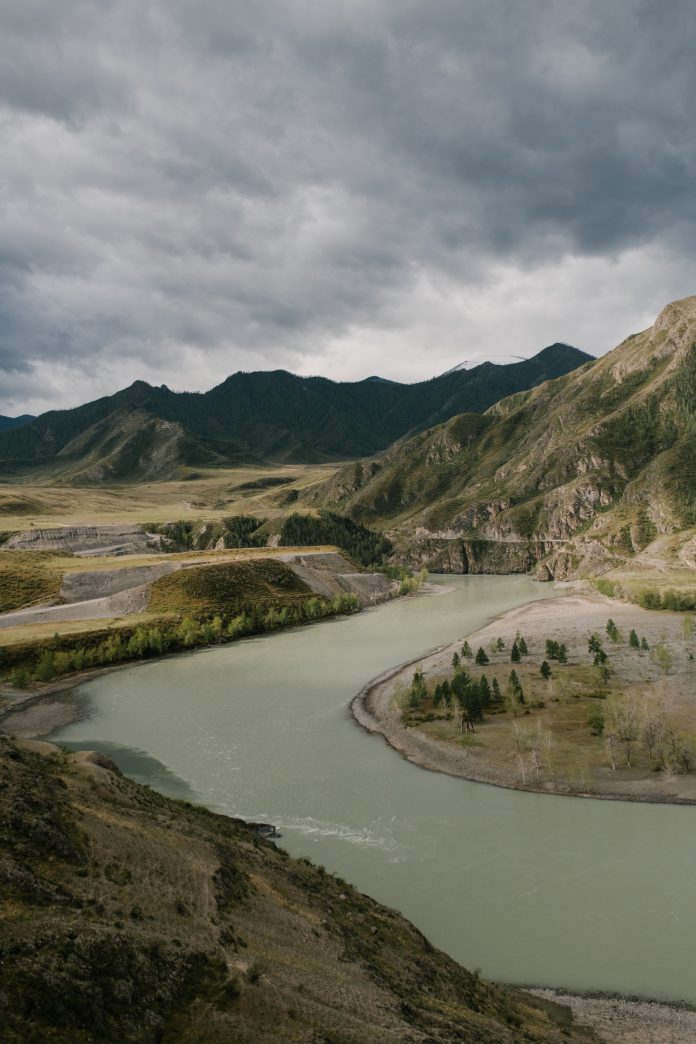What have countries agreed to do?
All Parties to the Paris Agreement committed to strengthening the global response to climate change by increasing the ability of all to adapt and build resilience, and reduce vulnerability. See more details here.
At COP26, counties adopted the Glasgow Climate Pact, which calls for a doubling of finance to support developing countries in adapting to the impacts of climate change and building resilience. Glasgow also established a work programme to define a global goal on adaptation, which will identify collective needs and solutions to the climate crisis already affecting many countries.
Since 2011, under the UN Framework Convention on Climate Change, a number of countries have developed National Adaptation Plans. Check if your country has one and what it says. Or get the latest updates on how countries are elaborating plans as part of national development strategies.

Supported by UNEP, infiltration ditches were built by the CityAdapt project in coffee farms in San Salvador to reduce flooding. CityAdapt
Making it happen
A number of efforts are underway to help people adapt to climate change. One is the global Adaptation Fund, which finances pioneering initiatives in developing countries. You can see if your country has a project. And watch how adaptation works for fisher people in Peru, who are combining traditional knowledge and technology to protect their livelihoods.
Watch as small farmers in Costa Rica develop climate-smart and resilient methods to adapt to floods and droughts, improving water and food security. Or take a journey to India’s Himalayan region where marginalized communities are managing climate pressures on water through practices such as spring rejuvenation, rainwater harvesting, drip irrigation and sprinklers.
Kiribati, a small island developing State that is highly vulnerable to climate change, has been among the earliest adopters of climate adaptation. It is improving the management of fisheries to safeguard livelihoods and food security and stepping up early warning systems for disasters.
In Ghana, women farmers are adapting to increasingly erratic rainfall by diversifying their livelihoods. With new skills, they are producing agricultural products such as soy milk and shea butter that fetch higher prices in local markets. Farmers in Bosnia and Herzegovina have adjusted crop choices to deal with droughts, such as by moving from apples to warmer weather peaches.
In the Maldives, declining rainfall and hotter summers have required constructing larger rainwater tanks and desalination facilities to process sea water, while setting up systems to carefully track water use and trigger early warnings of dry periods. Sri Lanka is repurposing an ancient system of water tanks to keep water flowing to farms and homes.
Many solutions to climate change lie in nature. Learn more about ecosystem-based adaptation and six ways that nature can protect us.
For an example of so-called nature-based solutions, find out how communities in Djibouti are staying safe by building flood walls. They are also restoring mangrove forests, which protect against sea-level rise, provide food for people and offer a haven for plants and animals. In Viet Nam, coastal farmers have turned from collecting increasingly scarce marine resources such as snails and crabs to developing beekeeping linked to mangrove restoration.
In Albania, one of the countries in Europe hardest hit by coastal erosion, restoring vegetation on the Kune-Vain Lagoon protects shoreline communities. It also helps sustain a globally recognized corridor for migrating birds.
It might seem like nature-based solutions are mostly for the countryside. But cities are also boosting resilience by turning to nature. In El Salvador, the capital, San Salvador, aims to become a “sponge city” by restoring surrounding forests to limit landslides and floods, and improving drainage in ways that mimic natural streams and rivers.
In the United States, the coastal city of Miami is raising street levels and developing green infrastructure, tandem with ambitious plans to reduce greenhouse gas emissions.

Mangroves, seen here in a nursery, are being used to buffer Djibouti’s coast from flooding. Photo: Ministry of Habitat, Urbanism and Environment, Djibouti.
Explore more
The Adaptation Gap Report chronicles slow progress in climate adaptation, for reasons that include a lack of finance, and showcases nature-based solutions. Seven lessons on adapting to climate change draws on experiences to date.
How can the world save 23,000 lives and gain $162 billion in benefits a year? By improving weather forecasts, early warning systems and climate information. See the Hydromet Gap Report.
Adapt Now, from the Global Commission on Adaptation, details benefits from adaptation to urge action by governments, businesses, investors and community leaders. The Economic Case for Nature shows how protecting ecosystems can avoid trillions in losses to national economies.
A practical guide to climate-resilient buildings offers tips for construction, especially in communities with few professionally trained architects and engineers.
One more consideration is closing the digital divide to generate more and better data and predict climate risks in time.
Read up on the science
The IPCC’s report on Impacts, Adaptation and Vulnerability assesses the impacts of climate change, looking at ecosystems, biodiversity, and human communities at global and regional levels. It also reviews vulnerabilities and the capacities and limits of the natural world and human societies to adapt to climate change.
The World Adaptation Science Programme links researchers, policymakers and practitioners to create and share knowledge that can shape adaptation policy and action. Recent briefs cover issues like adapting across borders and so-called “high-end” climate change, where temperatures climb so high that climate consequences would be even more extreme.
Join the global movement
Check out the Race to Resilience for 4 billion people by 2030. Better yet, be ambitious, create an initiative and apply to join the drive for a safer world.
To help heal the planet, be part of the mobilizing around the UN Decade on Ecosystem Restoration, which aims to prevent, halt and reverse environmental degradation in the next 10 years. Share the word on climate action with the UN’s digital assets.




